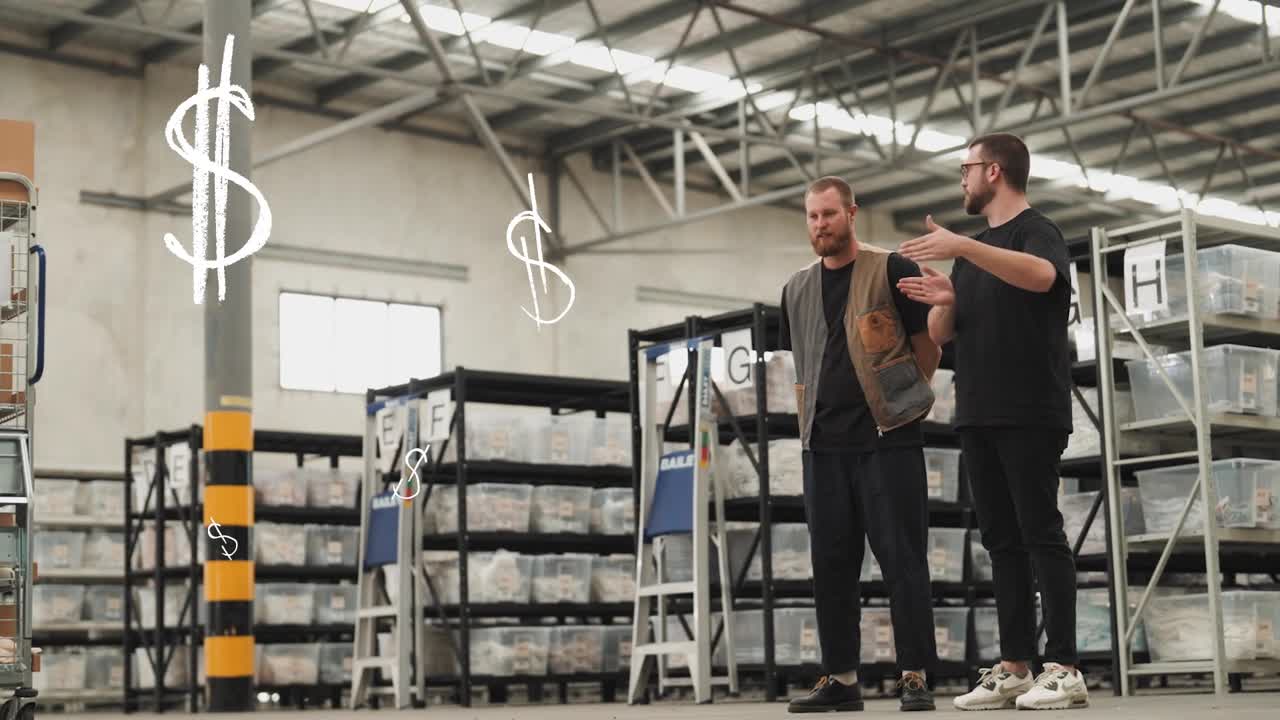Vertical
Apparel & Fashion
Software Integrated
Adobe Commerce & Starshipit
Region
APAC
Company Size
Scale Up
Andrew Owen set up Amaroso Boutique with his wife in 2014. Originally established as a Facebook group with users commenting on pictures of products to buy them, the brand has since grown exponentially year on year to become one of Australia’s leading women’s fashion labels.
From stacking garments in their front room to going live with Peoplevox in their fourth warehouse, the journey has been incredible for this entrepreneurial couple – especially as they had no prior experience in retail or fashion before starting this community-led venture.
Hear from the man himself in this growth story, as we cover the early stages of the brand, their incredible scale-up, helping them to move on from manual processes and putting in a WMS, and finally their set up for the future of the business.
30,000 members fighting over dresses in the comments!
“We got started about 8 years ago. My wife decided it was something she wanted to pursue, so we both quit our jobs and fully committed. The first version of the business was a Facebook group, where we would list dresses and other womenswear that we had procured, and the community of followers would be able to comment if they wanted to buy it.
That grew organically, and we became really popular. At its peak, we had 20 to 30 thousand members and a fully-fledged auctioning system in the comments on these garments. There was a huge sense of FOMO – we had items selling out in just a couple of minutes.. Everything was totally manual, and our house was completely full of stock that we were storing before shipping out.
Professionalising with a new website – worth the risk for long term gains?
“Obviously that operation escalated to the point where we knew we could make a success online, we just needed to set up more officially. We had to set up an ecommerce website, start taking orders and payments with proper systems, and move to a warehouse and out of our home. The business was in a great spot in terms of customers and product, we just needed to evolve.
It wasn’t immediately smooth sailing. Whilst we had that super-engaged community, all with their notifications on, ready to jump on anything we posted in the Facebook group, suddenly we were asking those people to come over to a brand new website, without the FOMO, without the sense of ‘get it now or it’s gone for good’. It was a real reality check for us, in those first few weeks and months, trying to build a brand pretty much from scratch. The sales numbers dropped quite a bit from their Facebook peak to this new site. We did question, was this a good idea?
Fortunately, I’ve got a mantra – bite off more than you can chew and then just chew like crazy! I must’ve read every single book there is on marketing, on running an ecommerce business, on how to set up ads and sell products online. I consumed a whole heap of content, and learnt incredibly fast.
Putting that into practice into the business really kicked things off for us. I remember one night, we were out at a friend’s house for dinner. Earlier in the day, I’d really knuckled down and set up some quality ads, really getting them perfect, on Facebook and Google. I could hear my phone pinging every couple of minutes – it was the notification for orders coming in. I looked over at my wife and she realised what it was as well. We’d cracked it! That was the moment we knew we had a serious business on our hands and we could be confident the risk was worthwhile.”

Truly testing the limits of a manual fulfillment model
“After that, we grew really fast. Investing money back into the business, we scaled rapidly over 4-5 years. We had to move warehouse a number of times as we kept filling it up with stock, the more we sold. There were multiple times when we would literally be piling boxes of stock in the carpark outside the warehouse. An optimal warehouse will be running at about 80% of its total capacity. I reckon we were at more like 150%, most of the time! It was all moving fast and the demand was really strong, so we just had to keep going.
Everything was done by memory. Our first couple of warehouses were only 100-200 square metres, but we were still shipping 100s of orders a day with totally manual processes. Workers had to know where everything was, which meant new staff would be pretty ineffective for at least 3-6 months as packers, and then another 6 months before they would be confident and reliable enough to be utilised as pickers.
We had so many new products, as well as lots of older stuff all mixed together, that it was a total minefield, even just to find one thing, unless you really knew what you were looking for and where it was kept. We did make some good strides forward in the warehouse after a few years of toughing it out manually: we labelled our aisles alphabetically, and then started putting the products beginning with each letter in the matching aisle. ‘Ashley’ dresses in A, ‘Clarissa’ jackets in C etc.
Whilst that made things easier, we were still printing off shipping labels and orders on paper, and going out to pick a max of 3 orders at a time. The packers would then have to match the items with the labels, pulling them out of massive tubs with all the picked items piled up. Experienced staff would be double checking this, but human error obviously came into it and we were prone to the occasional mistake. Relying solely on the attention to detail of the individuals working in the warehouse was a challenge.”
![1[2]](https://www.peoplevox.com/wp-content/uploads/2023/10/12.png)
![2[1]](https://www.peoplevox.com/wp-content/uploads/2023/10/21-1.png)
Making the call to bring in a proven WMS to take them to the next level
“The conversation to bring in a barcode warehouse system must’ve been going around the office for almost a year. We had hired some new team members who had previously worked at other customers of Peoplevox, and they were real advocates of WMS. I took some convincing, as we’d come so far the way we were doing things, but ultimately, I could see the benefits of going to a more automated system that would remove errors and make our lives easier. We were a business that had doubled in size year over year consistently. That wouldn’t keep up with an upgrade to our warehouse processes.
When you’re a CEO, you get sold to online and on the phone almost every day. So what I was really looking for was a provider with a proven track record and some runs on the board in our industry. I spoke to a few other fashion brand owners and Peoplevox kept coming up.
From our first conversation, it was clear you guys were a real professional outfit and the references you had were awesome – a lot of women’s fashion brands in Australia that we know have strong operations. The product seemed like a perfect fit for us.”
Smooth implementation and instant results
“During the implementation and go-live process, again, I was reassured by working with a trusted, proven partner. You guys ran the project, kept it all to time, and were reliable and open throughout. It instilled me with confidence that I had made a good call and that this WMS was going to work out. Going live, the same thing – that feeling of confidence. This is exactly what I needed, and now I can see it working. I wasn’t oversold or undersold, just told exactly what the platform would deliver for us, and it did exactly that, from the outset.
The first big wins were with the use of your various picking methods, configuring them to our needs. ‘Single item batch picking’: in the fashion industry, a lot of the time you’re going to see huge spikes in orders for one item – if an ad performs really well for it or an influencer drops a picture wearing it for example. Before Peoplevox, we were only ever picking at most 3 orders at a time, whereas using this picking method, we could pick 20-30-40 single item orders in one batch, basically throwing the whole box into the picking trolley sometimes! That made a huge dent. Alongside that, for multi-item orders, we started using ‘pick and sort to trolley’ with the trolleys that you recommended. That enables us to pick 26 orders at once, sorting as we go, which speeds up the packing process massively as well. Pick rates and picking accuracy have both shot up across the team.
![1[1]](https://www.peoplevox.com/wp-content/uploads/2023/10/11.png)
![2[1]](https://www.peoplevox.com/wp-content/uploads/2023/10/21.png)
A fully integrated warehouse management and shipping solution
“With our carrier management solution Starshipit integrated to Peoplevox, it also means we are able to prioritize certain order profiles to pick at the start of every day and get them shipped fast. We filter down the orders in Peoplevox and get all the international orders done first thing, before moving onto local orders through Australia Post. The two systems integrate really smoothly. Having rules and automations set up in the back-end has made managing our multiple carriers much easier and more efficient, which means we can continue to offer awesome choices like ‘same day’ delivery to our customers.”
Peoplevox for people management
“We’ve saved 200k AUD a year on staff. Putting Peoplevox in has meant we’re able to do more with less people. 3 of the team have moved on from the warehouse team and are now working elsewhere in the business, but there’s been no need to replace them. If and when we do have a sales surge, we could always bring them back in if needed. But actually, the system is so intuitive that I can get temp staff in now as required, and get them trained up in the warehouse picking orders within minutes. In the old way, like I said, it would take 3-6 months experience minimum to become an effective team member, but now, we have brand new people starting and effective on day one. On top of staff costs, the cost of my time and effort training and onboarding people has been cut so dramatically. I’ve freed up a whole heap of my time to focus on other areas of the business, because I know the warehouse team can just crack on without too much hands-on guidance anymore.”
Looking ahead – we are set up for scale and ready for growth
“The final benefit we should talk about is the scalability of the system. I feel like we could grow 500% now and the warehouse wouldn’t fall over. We’d obviously have to change loads of things in the business to handle being that much bigger, but the warehouse with Peoplevox processes in play, we could just add some more devices, more pack stations and we’d be good. The model is ready to flex up and help us handle more and more volume as it comes in.
Not having a WMS, as I can now see, would have been a really big factor in holding us back from that kind of growth. But now, we could literally grow 100% overnight and I’d be really confident we could absorb that growth and handle the demand in the warehouse. It wouldn’t be an issue.”
Talk to Us
Talk to us about your ambitions and current challenges. Our experienced team will be able to see what’s possible.
Streamlining operations and automating tasks
Real-time inventory tracking
Productivity reporting and dashboards




